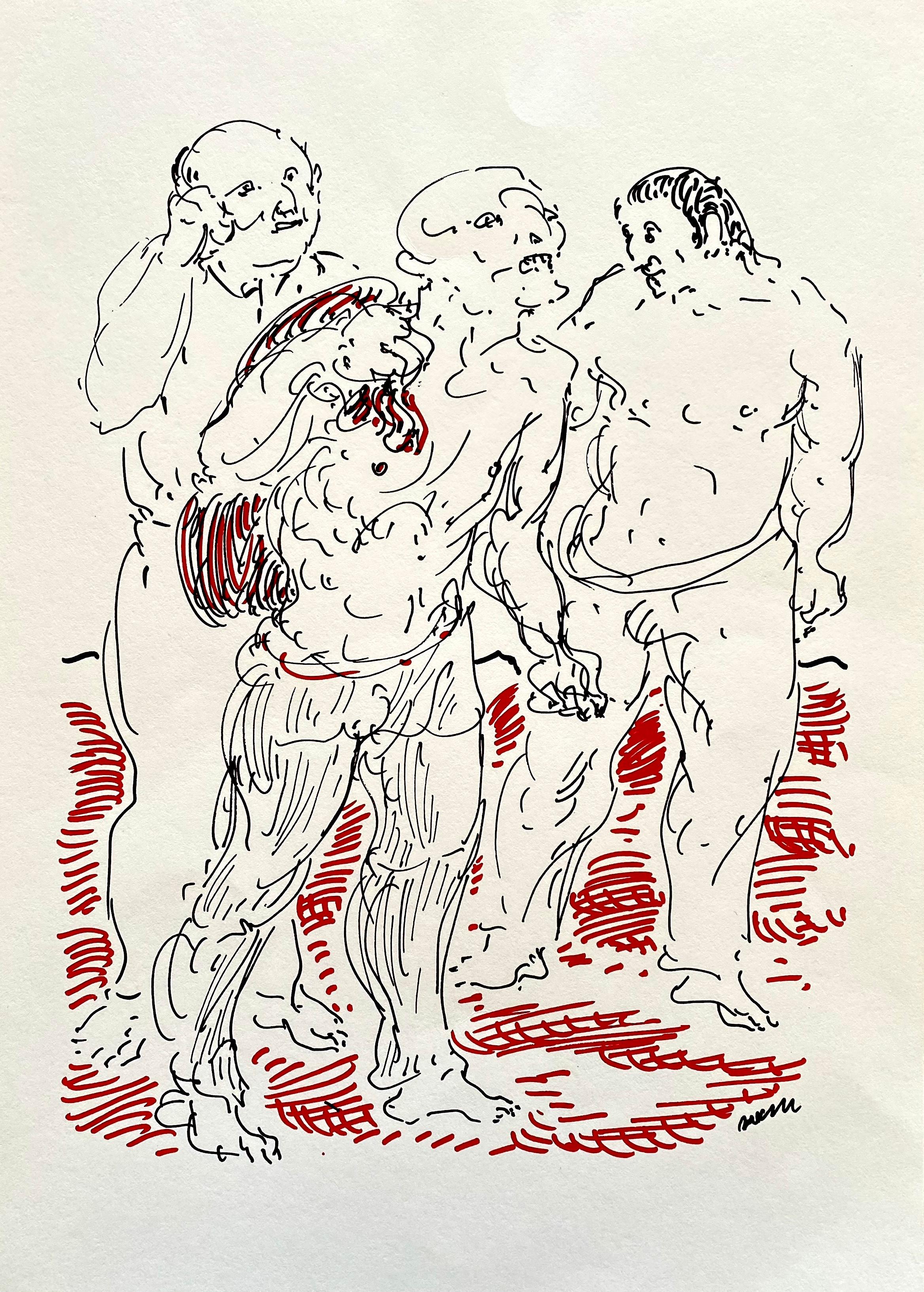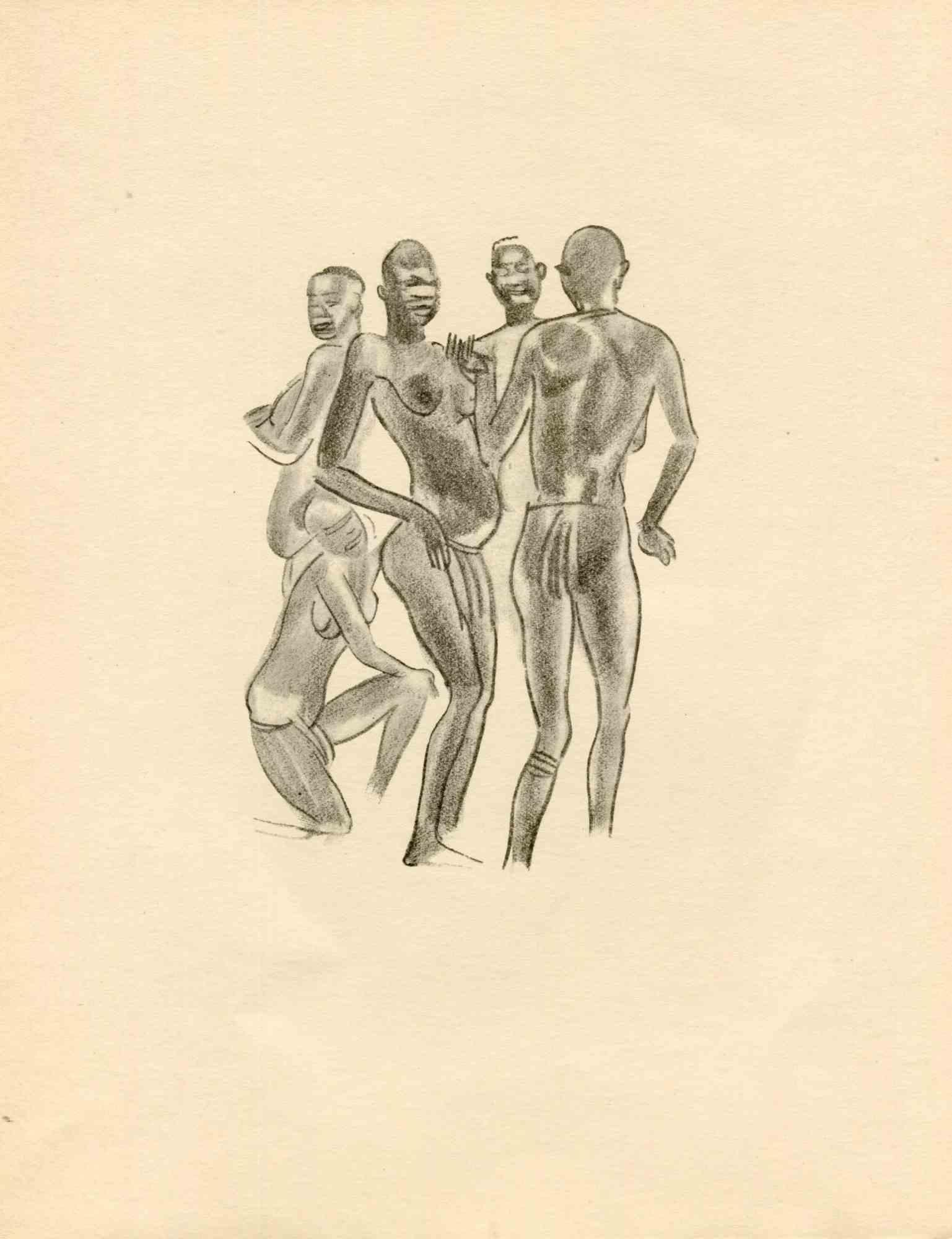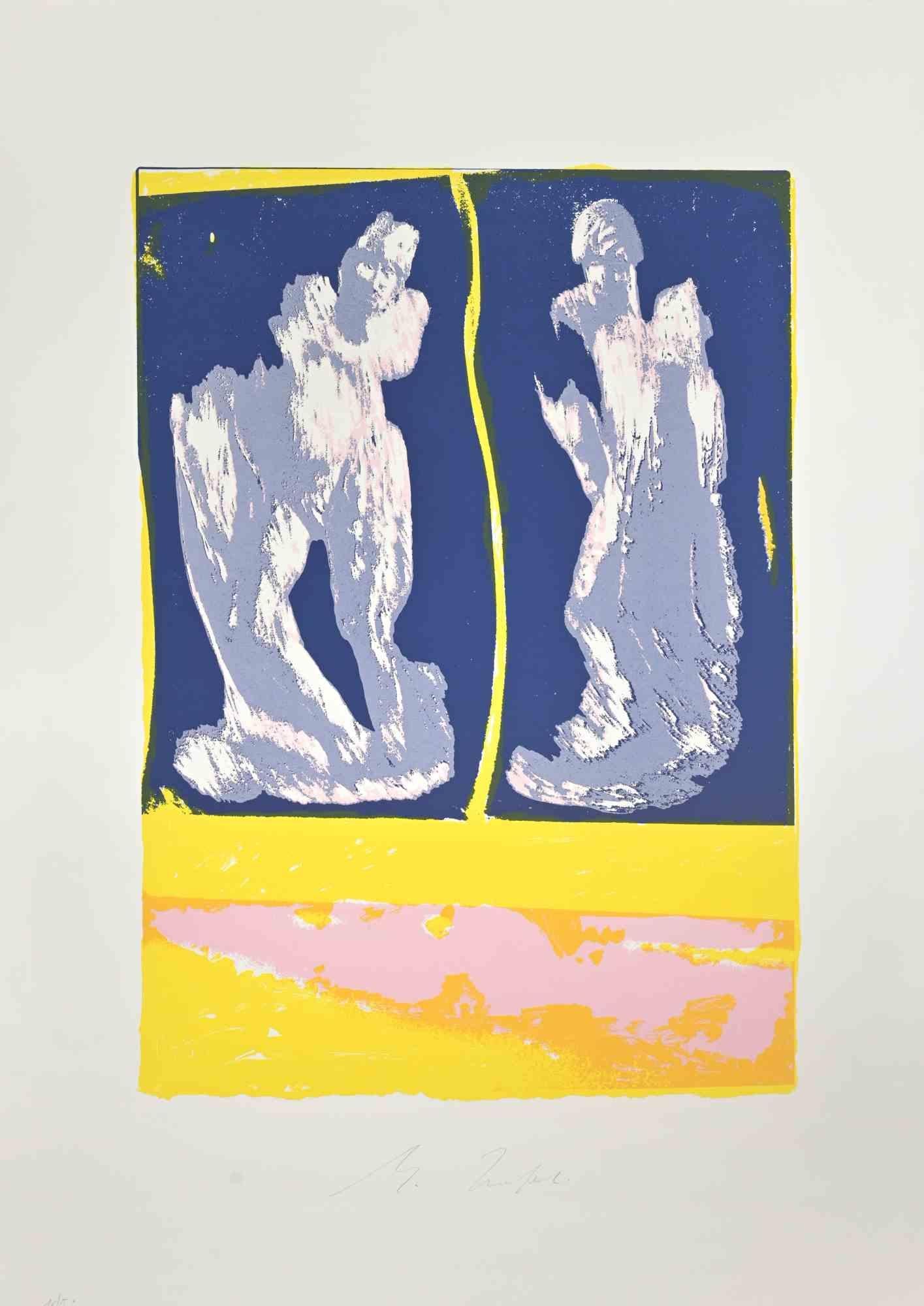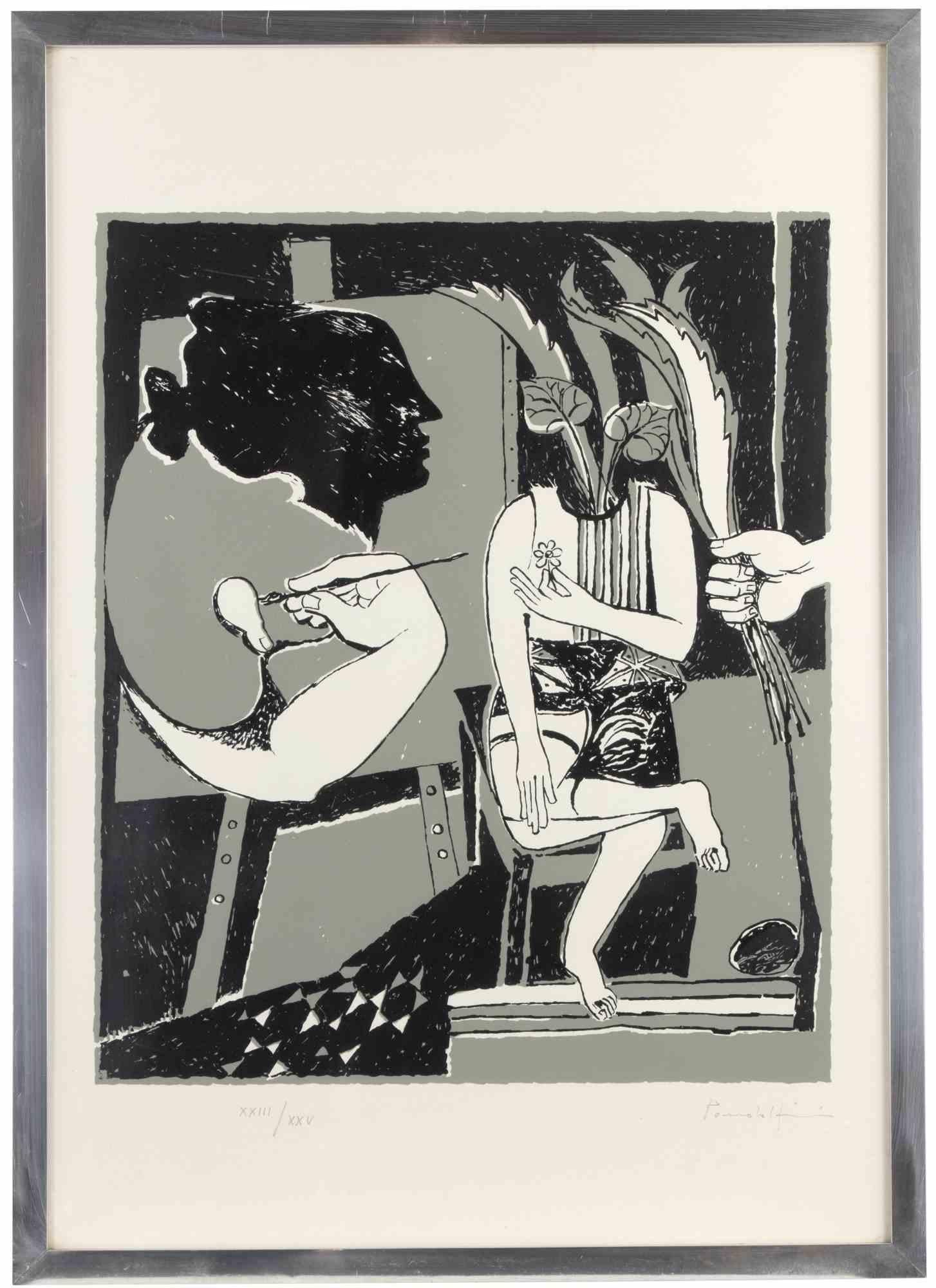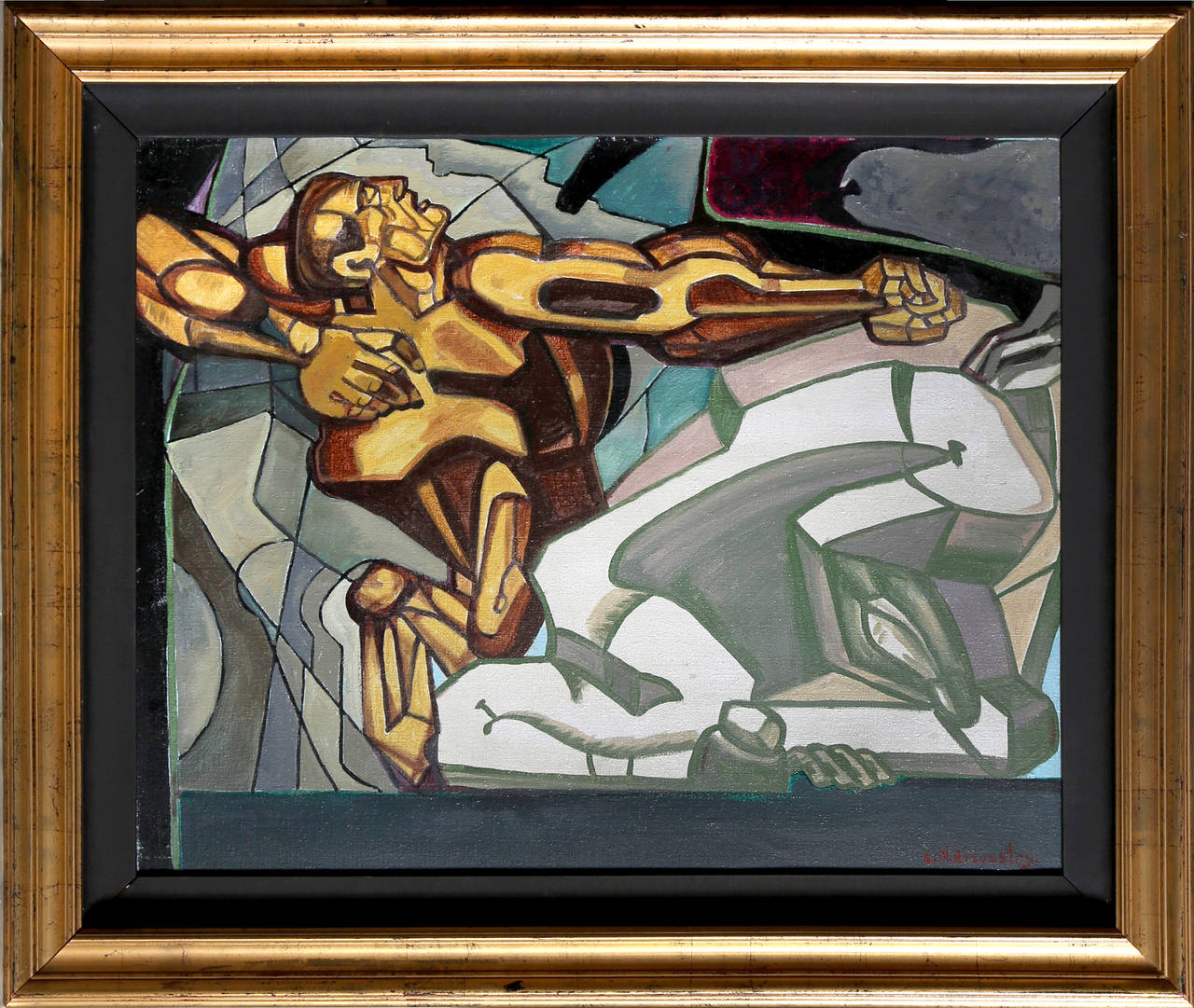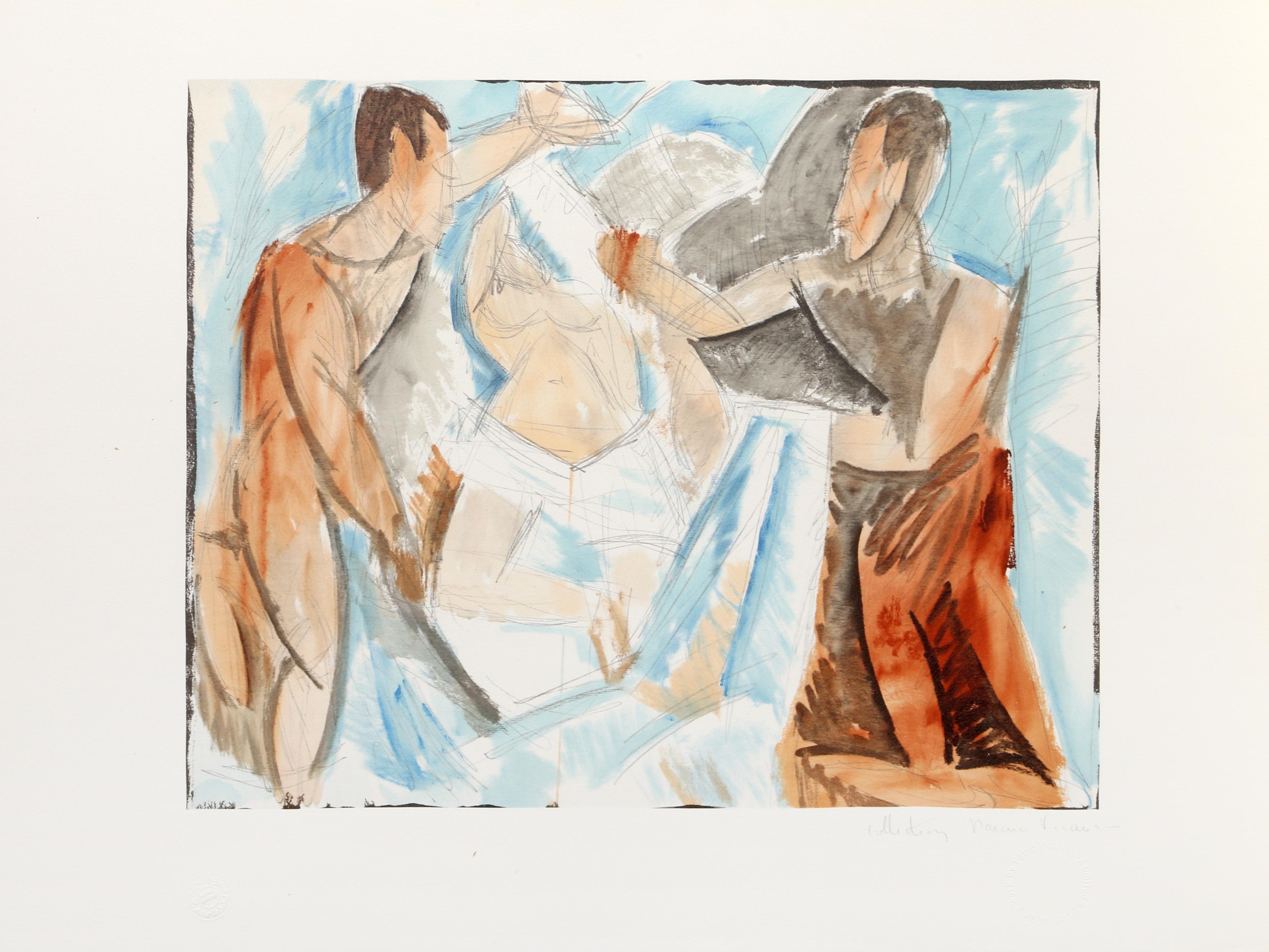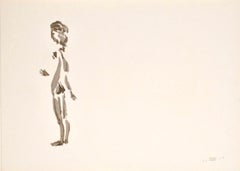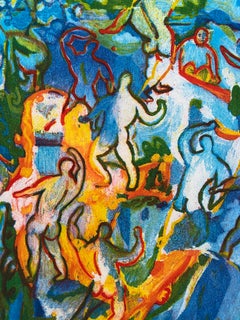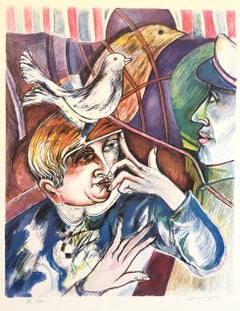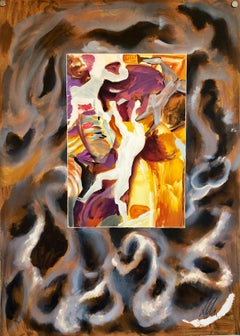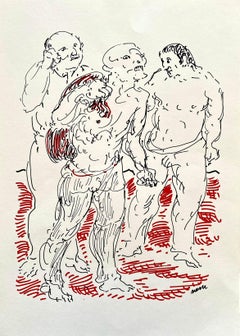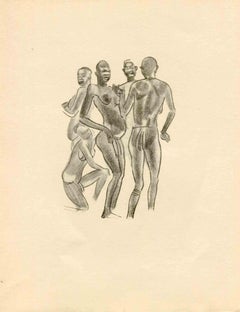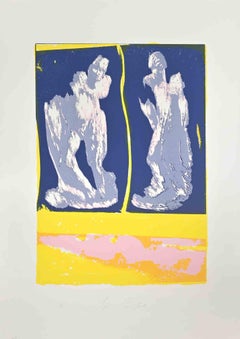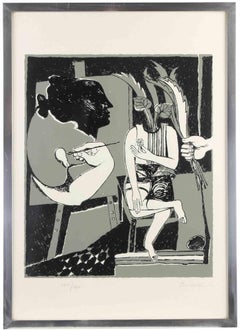Items Similar to Lithograph Screenprint Male Heroic Figures
Want more images or videos?
Request additional images or videos from the seller
1 of 8
Ernst NeizvestnyLithograph Screenprint Male Heroic Figures
$1,100
£833.46
€956.33
CA$1,547.88
A$1,701.54
CHF 894.25
MX$20,662.93
NOK 11,155.58
SEK 10,569.13
DKK 7,137.32
About the Item
Ernst Iosifovich Neizvestny (Russian: Эрнст Ио́сифович Неизве́стный) (born 1925) is a Russian sculptor. He lives and works in New York City.
Non Conformist Post Soviet Avant Garde
Neizvestny was born 9 April 1925 in Sverdlovsk (now Yekaterinburg). In 1942, at the age of 17, he joined the Red Army as a volunteer. At the close of World War II, he was heavily wounded and sustained a clinical death. Although he was awarded the Order of the Red Star and his mother received an official notification that her son had died, Neizvestny managed to survive.
In 1947, Neizvestny was enrolled at the Art Academy of Latvia in Riga. He continued his education at the Surikov Moscow Art Institute and the Philosophy Department of the Moscow State University. His sculptures, often based on the forms of the human body, are noted for their expressionism and powerful plasticity. Although his preferred material is bronze, his larger, monumental installations are often executed in concrete. Most of his works are arranged in extensive cycles, the best known of which is The Tree of Life, a theme he has developed since 1956.
Art career
Although Nikita Khrushchev famously derided Neizvestny's works as "degenerate" art at the Moscow Manege exhibition of 1962 ("Why do you disfigure the faces of Soviet people?"), the sculptor was later approached by Khruschev's family to design a tomb for the former Soviet leader at the Novodevichy Cemetery. Other well-known works he created during the Soviet period are Prometheus in Artek (1966).
During the 1980s, Neizvestny was a visiting lecturer at the University of Oregon and at UC Berkeley. He also worked with Magna Gallery in San Francisco, and had a number of shows which were well-attended in the mid 1980s. This gallery also asked him to create his "Man through the Wall" series to celebrate the end of Communism at the end of the 1980s. Magna Gallery closed at the end of 1992
In 1996, Neizvestny completed his Mask of Sorrow, a 15-meter tall monument to the victims of Soviet purges, situated in Magadan. The same year, he was awarded the State Prize of the Russian Federation. Although he still lives in New York City and works at Columbia University, Neizvestny frequently visits Moscow and celebrated his 80th birthday there. A museum dedicated to his sculptures was established in Uttersberg, Sweden. Some of his crucifixion statues were acquired by John Paul II for the Vatican Museums. In 2004 Neizvestny became an honorary member of the Russian Academy of Arts.
Museum and Public Collections
Museum of Modern Art, New York
The Jewish Museum, New York
Kennedy Center for Performing Arts, Washington, D.C.
Duke University Museum of Art, Durham, North Carolina
Museum of Art, University of California, Berkeley, California
Jane Voohrees Zimmerli Museum, Rutgers University, New Brunswick, New Jersey
United Nations, New York
The State Russian Museum, St. Petersburg
The State Tretyakov Gallery, Moscow
The State Pushkin Museum, Moscow
Dostoevsky Museum, Moscow
ART4.RU Contemporary Art Museum, Moscow
Museum of Fine Arts, Kursk
Museum of Fine Arts,Vologda
Museum of Fine Arts,Volgograd
Museum of Modern Ecclesiastical Art, Vatican, Rome
Moderna Museet, Stockholm, Sweden
Tree of Life Museum, Uttersberg, Sweden
Sven-Olov Anderson’s Torg, Koping, Sweden
Thielska Galleriet, Stockholm, Sweden
Oslo Municipal Art Collection, Norway
Municipality of Oslo Art Collection, Norway
Israel Museum, Jerusalem
Tel Aviv Museum of Modern Art, Tel Aviv
Lvov Gallery, Lvov, Ukraine
Museum of Modern Art, Belgrade, Serbia
Yerevan Gallery, Yerevan, Armenia
Monuments and Public Commissions
Lotus Blossom, Aswan Dam, Egypt
Tree of Life II, United Nations, New York
Bust of Dmitri Shostakovich for the Kennedy Center, Washington, D.C.
Tree of Life, Moscow
Prometheus, 15m stainless steel sculpture for Electro-Expo 72 exhibition, Moscow
Wings for the Institute of Light Alloys, Moscow
Rebirth (Archangel Michael), Moscow
Nikita Khrushchev’s tombstone at Novodevichiy Cemetery, Moscow
Mask of Mourning, Memorial to the Victims of Stalinism, Magadan, Russia
Exodus and Return, Monument to The Kalmykian Deportation, Elista, Kalmykia, Russia
970-meter decorative relief for Institute of Electronics and Technology, Zelenograd, Russia
Monument to the Coal Miners, Kemerovo, Russia
Monument to Sergei Diaghilev, Perm, Russia
Monument to World’s Children, 150-meter decorative relief for Artek Pioneer Camp in the Crimea, Ukraine
Golden Child, Odessa, Ukraine
Great Centaur, United Nations, Geneva
Centaur and Stone Tears, Belgrade, Serbia
Mask of Grief, Tombstone for Centaur, Milan, Italy
Fragment of Centaur, Vasteras, Sweden
- Creator:Ernst Neizvestny (1926 - 2016, Russian)
- Dimensions:Height: 24.5 in (62.23 cm)Width: 17.5 in (44.45 cm)
- Medium:
- Movement & Style:
- Period:
- Condition:
- Gallery Location:Surfside, FL
- Reference Number:1stDibs: LU38211400442
About the Seller
4.9
Platinum Seller
Premium sellers with a 4.7+ rating and 24-hour response times
Established in 1995
1stDibs seller since 2014
1,810 sales on 1stDibs
Typical response time: 1 hour
- ShippingRetrieving quote...Shipping from: Surfside, FL
- Return Policy
Authenticity Guarantee
In the unlikely event there’s an issue with an item’s authenticity, contact us within 1 year for a full refund. DetailsMoney-Back Guarantee
If your item is not as described, is damaged in transit, or does not arrive, contact us within 7 days for a full refund. Details24-Hour Cancellation
You have a 24-hour grace period in which to reconsider your purchase, with no questions asked.Vetted Professional Sellers
Our world-class sellers must adhere to strict standards for service and quality, maintaining the integrity of our listings.Price-Match Guarantee
If you find that a seller listed the same item for a lower price elsewhere, we’ll match it.Trusted Global Delivery
Our best-in-class carrier network provides specialized shipping options worldwide, including custom delivery.More From This Seller
View AllApeles Fenosa Spanish Sculptor Mourlot Lithograph Abstract Expressionist Figures
By Apelles Fenosa
Located in Surfside, FL
This is from a hand signed, limited edition (edition of 125) folio or full page lithographs some having a poem verso. The individual sheets are not signed or numbered. This listing ...
Category
1970s Expressionist Figurative Prints
Materials
Lithograph
Lithograph Italian Post Modernist Figurative Pop Art
By Sandro Chia
Located in Surfside, FL
Sandro Chia was born in Florence in 1946. He has studied at the Istituto d’Arte and then at the Accademia di Belle Arti in Florence where he graduated in 1969. After graduation, he h...
Category
Late 20th Century Pop Art Figurative Prints
Materials
Lithograph
1980's Large Modernist Israeli Film Noir Figures Lithograph Neo-Expressionism
By Shaoul Smira
Located in Surfside, FL
Shaoul Smira (Israeli, b. 1939)
City Light Publisher, San Francisco. (Lawrence Ferlinghetti) signed "SMIRA" in pencil l.r. and numbered "86/100" in pencil l.l., Color lithograph on ...
Category
1980s Post-Modern Figurative Paintings
Materials
Lithograph
Large lithograph Italian Post Modernist Bright Figurative Pop Art Cubism
By Sandro Chia
Located in Surfside, FL
Biography: Sandro Chia was born in Florence in 1946. He has studied at the Istituto d’Arte and then at the Accademia di Belle Arti in Florence where he graduated in 1969. After gradu...
Category
1980s Pop Art Figurative Prints
Materials
Lithograph
Apeles Fenosa Spanish Sculptor Mourlot Lithograph Abstract Expressionist Figures
By Apelles Fenosa
Located in Surfside, FL
This is from a hand signed, limited edition (edition of 125) folio or full page lithographs some having a poem verso. The individual sheets are not signed or numbered. This listing ...
Category
1970s Expressionist Figurative Prints
Materials
Lithograph
Modernist Figurative Pop Art Etching and Aquatint "the Artist" Michael Mazur
By Michael Mazur
Located in Surfside, FL
Michael Mazur
"The Artist"
Hand signed and editioned from the edition of 50
1967
Michael Burton Mazur (1935-August 18, 2009) was an American artist who was described by William Grim...
Category
Early 2000s American Modern Abstract Prints
Materials
Lithograph, Screen
You May Also Like
Figures- Lithograph by Aligi Sassu - 1983
Located in Roma, IT
Figures is an original lithograph realized by the Italian artist Aligi Sassu in 1983.
Signed on plate at the bottom. The work represents three figures of men in B/W and red colors.
...
Category
1980s Modern Figurative Prints
Materials
Paper, Lithograph
Tribal Men - Original Lithograph by Emmanuel Gondouin - 1930s
Located in Roma, IT
Tribal Men is an original lithograph realized in the early 1930s by Emmanuel Gondouin, (Versailles, 1883 - Parigi, 1934)
The artwork is depicted through strong strokes and is part...
Category
1930s Modern Figurative Prints
Materials
Lithograph
$216 Sale Price
40% Off
Figures - Lithograph by Mino Trafeli - 1980s
Located in Roma, IT
Figures is a Lithograph realized by Mino Trafeli in 1980s.
Edition 16/50.
Hand signed.
Good conditions.
Mino Trafeli (Volterra, December 29, 1922 - Volterra, August 9, 2018) ...
Category
1980s Modern Figurative Prints
Materials
Paper, Lithograph
Figures - Lithograph by Emanuele Pandolfini - 1970s
Located in Roma, IT
Figures is a contemporary artwork realized by Emanuele Pandolfini in 1970s.
Lithograph on paper.
Hand signed and numbered on the lower margin.
Edition of XXIII/XXV
Includes frame
Category
1970s Modern Figurative Prints
Materials
Lithograph
Kepmovr, Modernist Painting by Ernst Neizvestny
By Ernst Neizvestny
Located in Long Island City, NY
An oil painting by Ernst Neizvestny from 1984. An abstract modernist depiction of two figures in a dramatically expressive scene of pathos.
Artist: Ernst Neizvestny
Title: Kepmovr?...
Category
1980s Surrealist Figurative Paintings
Materials
Canvas, Oil
Etude de Personnages, Cubist Lithograph after Pablo Picasso
By Pablo Picasso
Located in Long Island City, NY
Intertwined throughout the composition, several figures rendered in hues of orange raise their arms and move about against a blue composition. Featuring the same color scheme and ang...
Category
Late 20th Century Cubist Figurative Prints
Materials
Lithograph
More Ways To Browse
Ecclesiastical Art
Archangel Michael
Prometheus Sculpture
Erotica Prints
Guerin Prints
Japanese Beauties Prints
John Hay Whitney
Joseph And His Brothers
Kaws Pink Companion
Keith Haring Bill T Jones
Laura Owens
Le Couple
Leonard Baskin Woodcut
Les Bijoux Vintage
Linocut Africa
Lithograph Jesus
Lois Jones
Marc Chagall Lion
